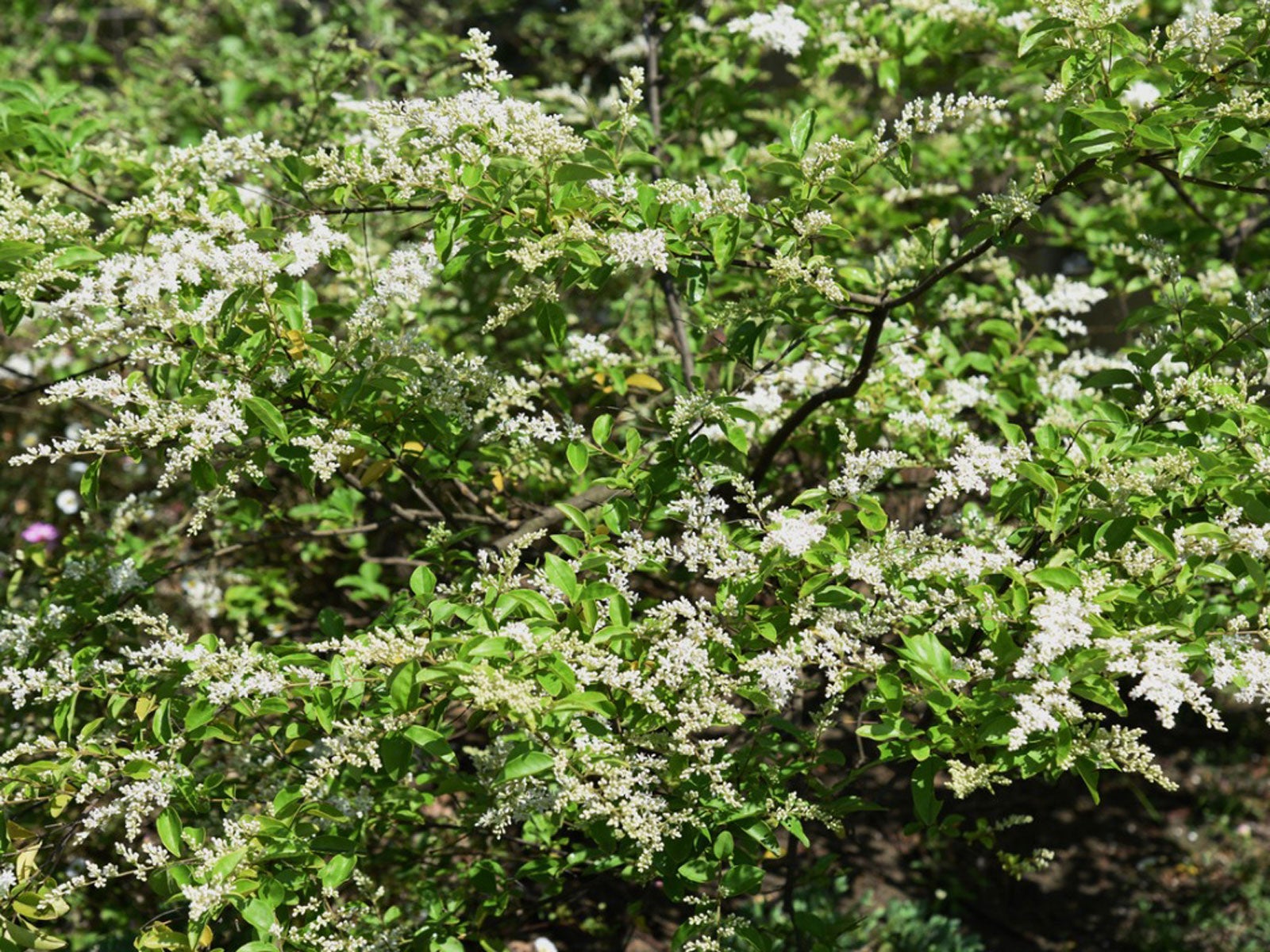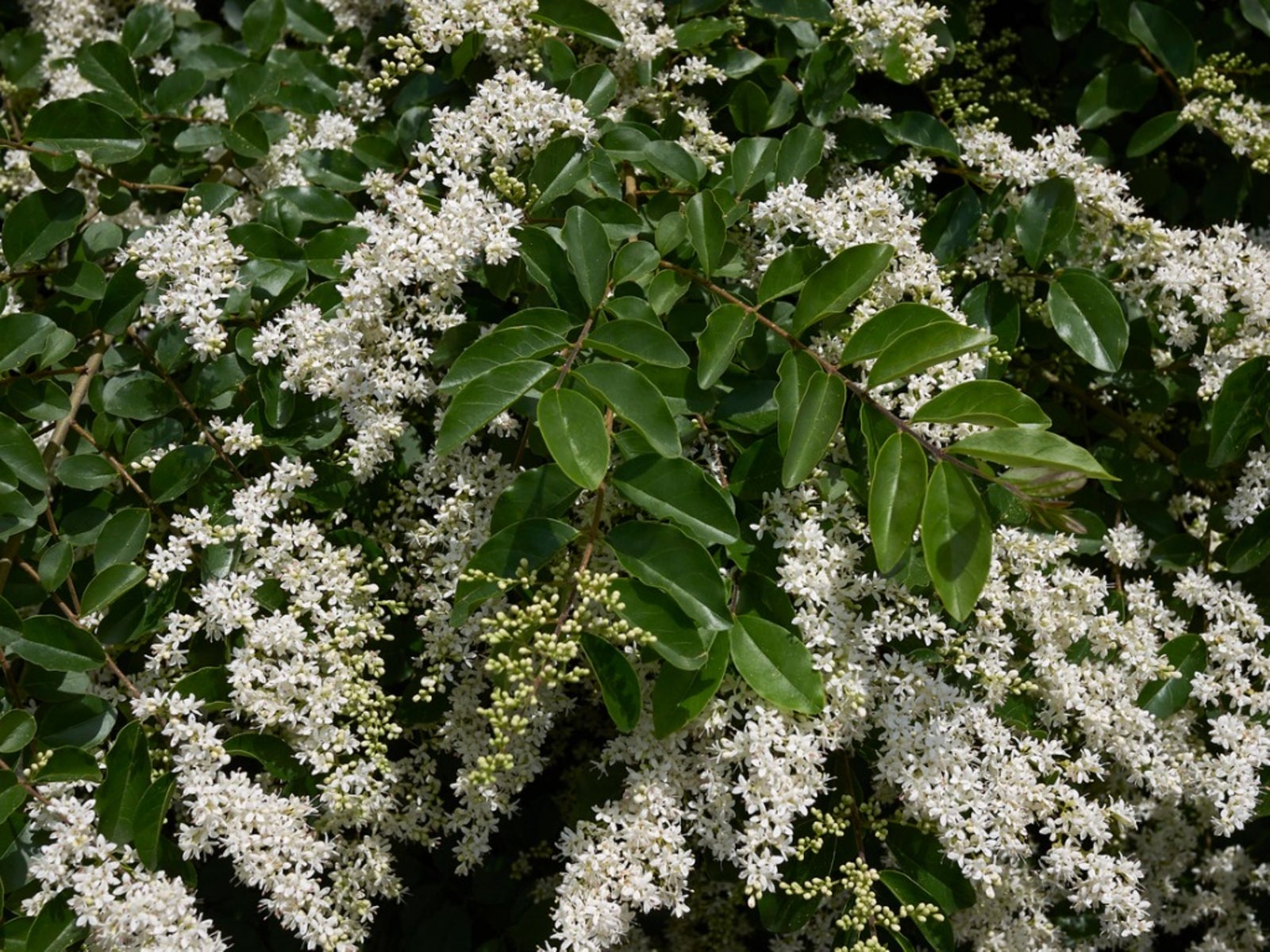Getting Rid Of Chinese Privet. How To Kill Chinese Privet Shrubs
Chinese privet weeds have begun springing up in forests and other areas where it has overtaken native plants.


Chinese privet, Ligustrum sinense, was originally brought to the U.S. from China for use in ornamental garden plantings. Long used as a hedge in many parts of the southeast, the plant was found to escape cultivation readily.
Over time, Chinese privet weeds began springing up in forests and other areas where it has overtaken native plants and become established.
How Chinese Privet Weeds Affect Native Plants
Native plants are particularly important to wildlife. Natives provide food and shelter for them and support beneficial insects, pollinators, and birds. These plants adapt to extremes of heat and cold while performing important functions in the ecosystem.
Invasive ornamentals like Chinese privet can edge out native plants with their aggressive growth and ability to multiply. Privet often escapes into pastureland, where it shades out grass and other grazing crops. Therefore, many states have developed programs dedicated solely to the maintenance and removal of invasive plants like Chinese privet.
Managing Chinese Privet
Chinese privet control may be a priority in your landscape. There are several ways to do this.
Methods of control may be “cultural, preventative, manual, and mechanical removal, biological control, physical controls, and herbicides” or combinations of these.
Total eradication is extremely difficult with well-established plants. Most methods of getting rid of privet require more than one application. Let’s look at some of these controls which are most easily practiced by the homeowner.
Gardening tips, videos, info and more delivered right to your inbox!
Sign up for the Gardening Know How newsletter today and receive a free copy of our e-book "How to Grow Delicious Tomatoes".
How to Kill Chinese Privet
- Don’t purchase or plant Chinese Privet in the landscape.
- Chop existing bushes in spring. Remove all stems, including the suckers. Dispose of it away from your landscape. Ideally, you can burn it. Even a twig or leaf can reproduce.
- Use an organic broad-leaf herbicide. Your local extension service or garden center can help you determine the best brand for this task.
- Repeat these methods if growth continues.
You can take these steps to rid your landscape of other invasive ornamentals too. Always research plants before adding them and try to avoid those that are invasive.

Becca Badgett was a regular contributor to Gardening Know How for ten years. Co-author of the book How to Grow an EMERGENCY Garden, Becca specializes in succulent and cactus gardening.
-
 Looking For Plants To Give You The Soft And Fuzzies? Try These 5 Fuzzy Leaf Plant Options
Looking For Plants To Give You The Soft And Fuzzies? Try These 5 Fuzzy Leaf Plant OptionsLovers of texture, drama, silver foliage and tactile plants will adore these special sensory garden additions. These fuzzy leaf plant options will leave you all aglow
By Susan Albert
-
 Get Ready For A Summer Of Hummers! Grow These Full Sun Hummingbird Plants and Flowers
Get Ready For A Summer Of Hummers! Grow These Full Sun Hummingbird Plants and FlowersIf you’re lucky enough to enjoy a sunny backyard, make sure you are maxing out on your pollinator opportunities and grow these full sun hummingbird plants and flowers
By Tonya Barnett
-
 Cutting Back Privet: How And When To Prune Privet Hedges
Cutting Back Privet: How And When To Prune Privet HedgesPrivet hedges are a popular and attractive way of delineating a property line. But if you plant a hedge, you?ll find that privet hedge pruning is a must. If you are wondering when to prune privet hedges or how to prune a privet hedge, this article will help.
By Teo Spengler
-
 Ligustrum Care: Information On How To Grow Ligustrum Shrubs
Ligustrum Care: Information On How To Grow Ligustrum ShrubsLigustrum plants, also known as privets, tolerate a wide range of conditions and are among the easiest shrubs and small trees to grow. Learn more about planting ligustrum shrubs and their care in this article.
By Jackie Carroll